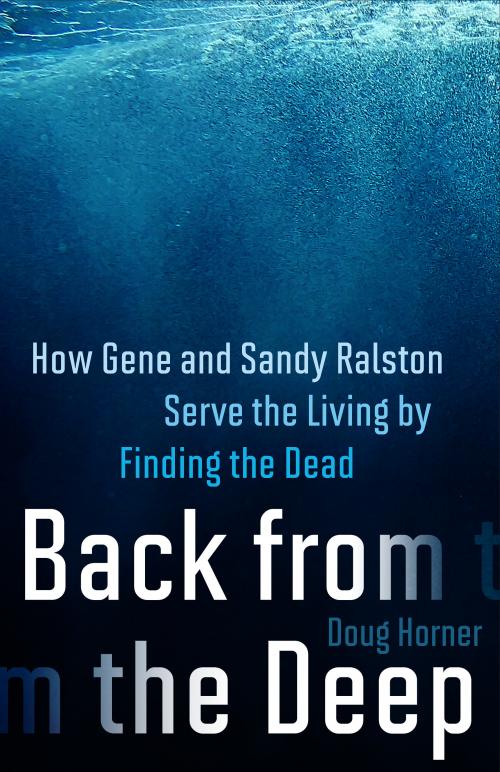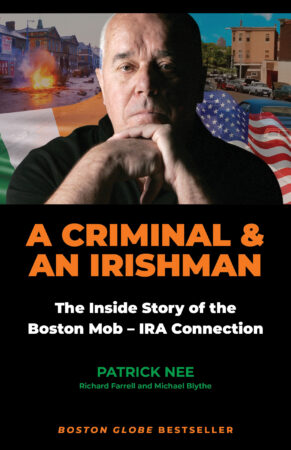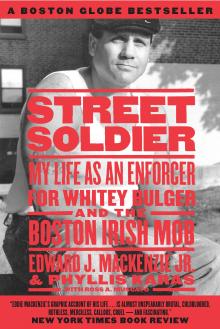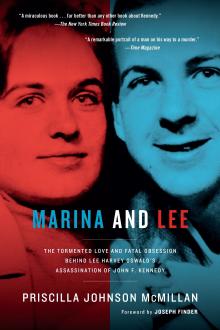Excerpt
C h a p t e r o n e
The Kathy G
On a rainy afternoon in early April 2021, the Kathy G was parked on a concrete pad between a vegetable garden and the house of Corporal Peter Westra, an officer with the Royal Canadian Mounted Police (RCMP). Beads of water clung to the hull and small pilothouse of the twenty-three-foot aluminum boat. It had a short mast and boom that looked like a miniature crane. A six-foot-long steel torpedo was fastened to the bow.
The boat, and the motor home parked nearby, belonged to Gene and Sandy Ralston, a married couple in their midseventies from a rural area outside of Boise, Idaho. They used a particu- lar type of sonar to search lakes and rivers throughout Canada and the United States for the bodies of people who had drowned. They were self-taught, but they were among the best underwa- ter search-and-recovery specialists in the world. As of two and a half weeks before, they’d found 124 corpses. Most of those people would still be missing if not for the Ralstons, who were the option of last resort. They would get the call to help only after the local and official resources were exhausted. And they offered their boat and expertise on a volunteer basis, charging only expenses
— basically gas money and whatever it cost to park their motor home. The going commercial rate for this type of equipment and expertise varied, but $4,000 a day was considered reasonable.
I drove six hundred miles, up and over two mountain ranges, to join Gene and Sandy in Maple Ridge, British Columbia, a small city not far east of Vancouver and Canada’s Pacific coast- line. The local police, known as the Ridge Meadows RCMP, had asked them to help on two searches. (The RCMP is a federal policing agency in Canada that also provides regional and municipal services on a contract basis. The Ridge Meadows detachment had 112 officers and about 50 civilian staff at the time.) One search was for a thirty-seven-year-old man who had drowned in Alouette Lake the past October. The other was for a small plane, and its two pilots, that had crashed into a river about a year before. The Ralstons had also committed to a third search, this one in a lake about a three-hour drive east of Maple Ridge, for a young man from Wyoming.
And then, if they had time, Corporal Westra, the miss- ing persons coordinator with the local RCMP, had told them about four other cold cases involving people presumed to have drowned in Alouette Lake that he would like to get solved once and for all. One of those incidents happened in the summer of 1974. Two friends were out fishing when a wave rolled over the back of the boat and it sank. The men swam for shore. One was rescued by a passing boat. The other drowned. Police, family, and volunteers searched the shorelines. The family hired scuba divers, but Alouette was more than five hundred feet deep in places — way beyond the capability of all but the most advanced divers. Searchers had tried to recover the body of the young man by dragging metal hooks across the lake bottom.
For most of human history, deep lakes have not relinquished their dead. In warm, shallow water, decomposition goes fast and creates gases that can surface a corpse within two to three days. Cold temperatures dramatically slow the natural process of decay. People who drown in water that is a hundred or more feet deep may never surface. The weight of the water traps the body on the bottom.
The oldest corpse that the Ralstons have found was miss- ing for twenty-nine years. The man had been wearing heavy, durable clothing when he drowned, which helped to keep his body intact. The sonar image shows the body lying on its back on an otherwise smooth lake bottom at a depth of 570 feet. It’s one of the sharpest outlines of a body that Gene and Sandy ever recorded.
The Ralstons’ search gear, known as side-scan sonar, uses sound instead of light to create a picture of the bottom of a lake, river, or ocean. The transducer, the device that generates the sound pulses and records their echoes, is housed in a torpedo- shaped casing called a towfish, which is pulled behind the boat and close to the bottom. The Ralstons’ towfish was custom made so they could plumb the deepest lakes on the continent. It weighs 150 pounds. They have enough cable on board to search down to a thousand feet. Reading a sonar image involves deci- phering the shadows that different objects cast on the bottom. The sound generated by the sonar reflects off the contours of solid objects — rocks, logs, bodies, sunken treasure — and makes them appear bright and distinct on the computer screen on the boat. The resolution is high enough that Gene and Sandy can pick out beer cans and fishing rods.
This type of sonar was invented in the 1950s but was kept secret by the American military for decades. The technology became more widely available in the 1980s, but it took a long time for people to grasp the potential. Side-scan sonar has revo- lutionized underwater exploration. The invention was akin to someone flicking a switch and turning on the lights in the dark corners of the deepest waters. Everyone from treasure hunters to archaeologists and engineers suddenly had the power to see through the abyss in real time.
The Ralstons bought their system in the fall of the year 2000 and unwittingly became pioneers in using the technology to find corpses. Their original plan was to use the sonar primarily for their business. At the time, Gene and Sandy ran their own environmental consulting firm doing a variety of work on the water, like investigating the effects of a proposed hydroelec- tric dam or measuring changes in sediment levels in reser- voirs used for drinking water. They thought the sonar would be handy for mapping river bottoms to help engineers decide on the best places to build bridges. But within weeks of getting it up and running, Gene and Sandy imaged the body of twenty- three-year-old Brandon Larsen on the bottom of Bear Lake, Utah. Word spread about a couple from Idaho with a mysteri- ous technology that could reveal the secrets of the deep. Over the next few years, more and more of the Ralstons’ business projects gave way to search missions. Same with vacations, hobbies, friends, and family — all those things that make up what most people consider a normal life.
The Ralstons never set out to become experts at finding drowning victims. They stumbled upon a major gap in the services available to the families of people who go missing in water. Police and volunteer search-and-rescue organizations are limited in terms of resources and expertise when it comes to deep water. If the initial search fails, families are often left to figure out and fund any additional efforts. They can hire a commercial outfit, which costs thousands of dollars a day. Or they can call Gene and Sandy.
I first met the Ralstons in early 2017 at a public library in a strip mall south of Boise. I had heard of them about a month earlier from a friend of my parents who had a summer cottage on Shuswap Lake in British Columbia. The family friend told me about how the Ralstons had recovered the body of a twenty- five-year-old man from Calgary, my hometown.
Kevin Boutilier jumped off a houseboat during the summer of 2013 to retrieve his baseball hat, which was blown off his head by a gust of wind. His family and the local authorities tried everything to find his body — sonar, underwater submersible, scuba divers — over a period of eleven months. The Ralstons arrived and located Kevin their second day on the water. I learned that not only do Gene and Sandy do unusual work, but they’re also unusually good at that unusual work.
I emailed Gene to discuss writing a magazine story about them, and we set up a time to meet in person. We talked for a few hours each afternoon over three days in a private room at the Lake Hazel Library. Gene was mannerly and chatty. He wore a collared flannel shirt tucked into jeans. His brown hair was graying and parted neatly to the side. Age had begun to soften the sharp edges of his body and face, but he looked strong and capable. Sandy had expansive blue eyes. Their striking color contrasted with the whiteness of her shoulder-length hair, which was pinned to the side and off her face with a small plas- tic clip. She wore roomy sweatshirts and cardigans that empha- sized her small stature and frame. Sandy was more guarded than Gene. She had a no-nonsense demeanor and would some- times flick the fingers of one hand to hurry her husband to the point of his story.
As I talked to the Ralstons, it became hard to keep all the different parts of all their different searches and recover- ies straight. There was the time they helped the FBI find the bodies of four murder victims on the bottom of a reservoir in California. That was what Gene called a “six-pack-of-beer story,” his unit of storytelling that comes after a “really long story.” On their next search they imaged a 1927 Chevrolet sedan on the bottom of a lake in Washington State. This discovery solved the mystery of what had happened to Blanche and Russell Warren, a married couple who had vanished on a summer afternoon in 1929, leaving behind two young sons. And then there was the time they had an astronaut from NASA aboard to help search for the wreckage of the space shuttle Columbia in a reservoir in Texas. I flew home from Idaho with a full notebook.
I met Barb Boutilier a couple of weeks later in Calgary. A retired teacher, she’d raised Kevin and his older sister on her own. She was proud of her son, of his vitality and big circle of close friends. She had been a hockey mom, driving Kevin to an endless stream of practices and games. She described one of her favorite memories of her son: It was a brief moment, a snapshot she had caught of him and his friends through the living room window on a summer afternoon. He had recently gotten his driv- er’s license and was in the family car, a white four-door sedan. His friends in the back seat were holding on to hockey nets, their arms out the windows on both sides of the car. They were headed down the street to a park. “They played hockey even in the summertime, those guys. It was kind of their life,” she said.
Barb showed me the sonar image that the Ralstons had made of her son’s body on the bottom of Shuswap Lake. She kept a copy on her cellphone. “So that’s kind of what it looks like, that’s actually him, off Gene and Sandy’s computer,” she said. The Ralstons had shown me similar images back in Idaho. A human body was easy to recognize in some sonar images, a bright-yellow figure on an otherwise flat and barren surface. It was what you couldn’t see, what your mind instantly inferred — the three hundred or so feet of water in Kevin’s case — that gave the images such a haunting quality.
“You need to bring him home. Everybody says it’s closure — I don’t know if it brings closure.” Barb told me that she still had Kevin’s ashes in her house. She had another more permanent place for his remains arranged, but she wasn’t yet ready to take that step. “It’s much better for him to be here than at the bottom of that lake. Every parent, anyone, would prefer to have their loved ones someplace they know. I guess they’re not safe, but close by.”
Barb struggled to find the words to explain the service, the gift, that Gene and Sandy had provided. Bringing a body back from the deep never means bringing a person back from the dead, but it was crucial for Barb and her family to have Kevin’s body home and to have somewhere she could visit and remem- ber and feel close to her son. I wanted to write about the Ralstons because I wanted to write about the people they have helped in this very specific and yet hard-to-put-your-finger-on kind of way.
But it was all so sad. Even when the Ralstons succeeded, it was sad. I felt guilty for dredging up those memories for Barb. It was clear, however, that she wanted to talk about her son and about the Ralstons — less because she wanted to be part of an article and more because she wanted to pay Gene and Sandy back somehow. “They are the only ones who can do this,” she said.
I joined the Ralstons on a search that spring in 2017 for a man in his early sixties who was presumed to have drowned in Slocan Lake, BC. Gene and Sandy spent two weeks scanning several square miles of the bottom, but never found him. Next I followed them for part of another search that summer, then a three-day training session in the fall on how to use sonar to find drowning victims, which they hosted for military and law enforcement officials in California. I was with the Ralstons in the spring of 2019 when they found the body of a twenty-year- old man who had drowned after his canoe capsized. That day happened to be Gene’s seventy-fourth birthday.
I eventually wrote the article about the Ralstons but kept in touch, meeting them on the occasional search when they were close to Calgary. I was curious about why they stayed so busy even after this type of sonar had become more widely available. Gene and Sandy often found someone after other search teams using the same technology had come up empty handed. They have an uncanny knack for finding bodies in water.
The Ralstons talked to Barb during the summer of 2014 about retiring. They had set themselves a goal of finding a hundred corpses. Kevin’s body was the ninety-fifth. Almost a decade and dozens more recoveries later, however, and Gene and Sandy continue to respond to requests for help. Someday, maybe soon, they will be forced to stop because they can no longer manage the physical demands of searching. The practical mechanics of finding and recovering corpses are no doubt disturbing. But it’s that proximity to death and decay that highlights the humanity required to see the job through. And so I decided in the spring of 2021 to drive to Maple Ridge and join the Ralstons one last time to learn as much as I could about this married couple from rural Idaho who serve the living by finding the dead.





